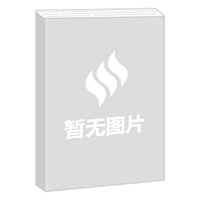
包邮船舶结构设计与分析(英文版 第2版)
1星价
¥62.6
(8.0折)
2星价¥62.6
定价¥78.0

暂无评论
图文详情
- ISBN:9787313235015
- 装帧:一般胶版纸
- 册数:暂无
- 重量:暂无
- 开本:其他
- 页数:229
- 出版时间:2020-09-01
- 条形码:9787313235015 ; 978-7-313-23501-5
内容简介
《船舶与海洋结构物结构设计与分析》的特点是概念阐述简明清晰,理论推导严密详尽,并穿插配合工程应用实例说明,目的是使学生通过工程应用实例来加深对船舶与海洋结构物结构设计与分析基本原理和基本概念的理解,以期收到事半功倍的效果。??《船舶与海洋结构物结构设计与分析》的重点是以结构静力学和动力学为基础,研究船舶与海洋结构物结构设计与分析的外载荷计算、结构动力响应、结构规范设计、结构直接计算法设计等。
目录
Chapter 1 Introduction to marine structural design
1.1 The traditional design method
1.1.1 The evolutionary process
1.1.2 A ship structural design example
1.1.3 The changes to the traditional design method
1.2 The modern design method
1.2.1 The first-principles-based approach
1.2.2 The design procedure
1.2.3 Benefits of the modem approach
Chapter 2 Marine structural design fundamentals
2.1 Structural arrangement design
2.1.1 Subdivision arrangement
2.1.2 Compartment arrangement
2.1.3 Access arrangement
2.2 Structural materials
2.2.1 Introduction to materials
2.2.2 Standard steels used for hull and other structure
2.2.3 High strength steel used for hull and other structures
2.2.4 Selection for steel grades
2.2.5 Other ship materials
2.2.6 An example of ship materials used for a dredging barge
2.3 Welding
2.3.1 The base types of welding joints
2.3.2 The base types of welding line
2.3.3 Stud welding
2.3.4 The determination of the weld size
2.3.5 A welding design example
2.4 Classification societies and their rules
2.4.1 Classification societies
2.4.2 Class rules, regulations and guides
Chapter 3 Loads and loads combinations
3.1 Environmental considerations
3.2 Loads
3.2.1 Static loads
3.2.2 The wave induced loads
3.2.3 The hydrodynamic loads
3.2.4 The sloshing loads
3.2.5 The impact loads
3.2.6 Other loads types
3.3 Loads combinations
3.4 Strength modeling and development of strength criteria
Chapter 4 Marine structural initial design
4.1 Hull girder strength and sheafing strength
4.2 Hull structural members design
4.2.1 Hating design
4.2.2 Longitudinals and girders design
4.2.3 Bulkhead design
4.3 An example of hull structural members design-pillar design
4.3.1 Basic design of pillars
4.3.2 Some requirements for the pillars in rules
4.3.3 Regulations of pillars on different types of ships
4.4 Superstructure design
4.4.1 The interaction between the superstructure and the main hull
4.4.2 The design of superstructures
4.4.3 The failure of superstructures and prevention measures
4.5 Introduction to structures of various kinds of ships
4.5.1 Oil tankers
4.5.2 Bulk carriers
4.5.3 Container ships
Chapter 5 Marine structural design analysis
5.1 Total strength assessment
5.1.1 Yielding strength
5.1.2 Buckling and ultimate strength
5.1.3 Fatigue strength
5.2 Strength criteria
5.2.1 General introduction
5.2.2 Yielding criteria
5.2.3 Buckling and ultimate strength criteria
5.2.4 Fatigue criteria
5.3 Finite element analysis
5.3.1 The developmental history of the finite element analysis
5.3.2 The basic idea of the finite element method
5.3.3 A finite element analysis example -- a 75,000 DWT bulk carrier
5.4 Spectral fatigue analysis of ship structures
5.5 The transverse strength analysis of a ship
5.5.1 Setting the design load
5.5.2 Simplification of members' geometry size
5.5.3 Simplification of the frame supporting conditions
5.5.4 Modeling the structure processing
5.5.5 Modeling the loads
5.5.6 Building the finite element model for the ship structures
Chapter 6 Marine structural design optimization
6.1 The introduction to the optimization
6.2 The categorization methods for optimization problems
6.2.1 Continuous versus discrete optimization
6.2.2 Constrained and unconstrained optimization
6.2.3 Global and local optimization
6.2.4 Deterministic and stochastic optimization
6.3 An example--the optimization of stiffened panels
6.3.1 Introduction to stiffened plates
6.3.2 The numerical solution method for a stiffened panel
6.3.3 Summarization
6.4 Another example--the optimization of a T-bar
6.4.1 The problem raised and the model established
6.4.2 Analytical solution method
6.4.3 Finite element analysis solution method
6.4.4 Comments on each solution method
References
展开全部
作者简介
王迎光:上海交通大学硕士导师,长期从事海洋工程随机结构动力学; 船舶非线性动力学; 船舶结构优化设计研究。
本类五星书
浏览历史
本类畅销
-

发电厂电气部分
¥34.6¥58.0 -

植物进化的故事
¥19.9¥59.0 -

赶往火星:红色星球定居计划
¥44.5¥58.0 -

数控车工
¥5.9¥11.5 -

低空无人机集群反制技术
¥82.6¥118.0 -

数据驱动的剩余寿命预测与维护决策技术
¥63.4¥79.0 -

手术机器人导航与控制
¥127.4¥169.8 -

射频干扰袖珍手册
¥18.4¥29.0 -

汽车车身构造与修复
¥30.7¥45.0 -

群目标分辨雷达初速测量技术
¥42.4¥69.0 -

秸秆挤压膨化技术及膨化腔流道仿真研究
¥40.6¥55.0 -

NVH前沿科技与工程应用
¥109.7¥159.0 -

电力系统分析
¥23.8¥38.0 -

继电保护原理
¥30.4¥49.0 -

不确定条件下装备剩余寿命预测方法及应用
¥60.4¥99.0 -

船舶分段装配
¥58.6¥80.0 -

基于深度学习的复杂退化系统剩余寿命智能预测技术
¥54.4¥89.0 -

火星探测器轨道动力学与控制
¥59.8¥98.0 -

美军联合作战弹药保障
¥35.8¥58.0 -

工程造价全过程管理系列丛书 工程结算与决算 第2版
¥37.4¥56.0











